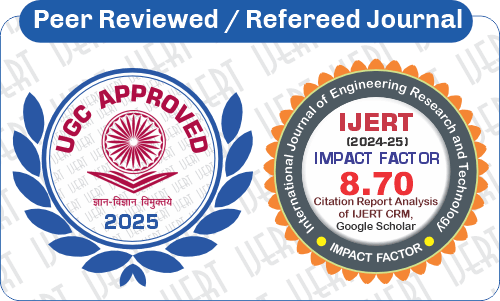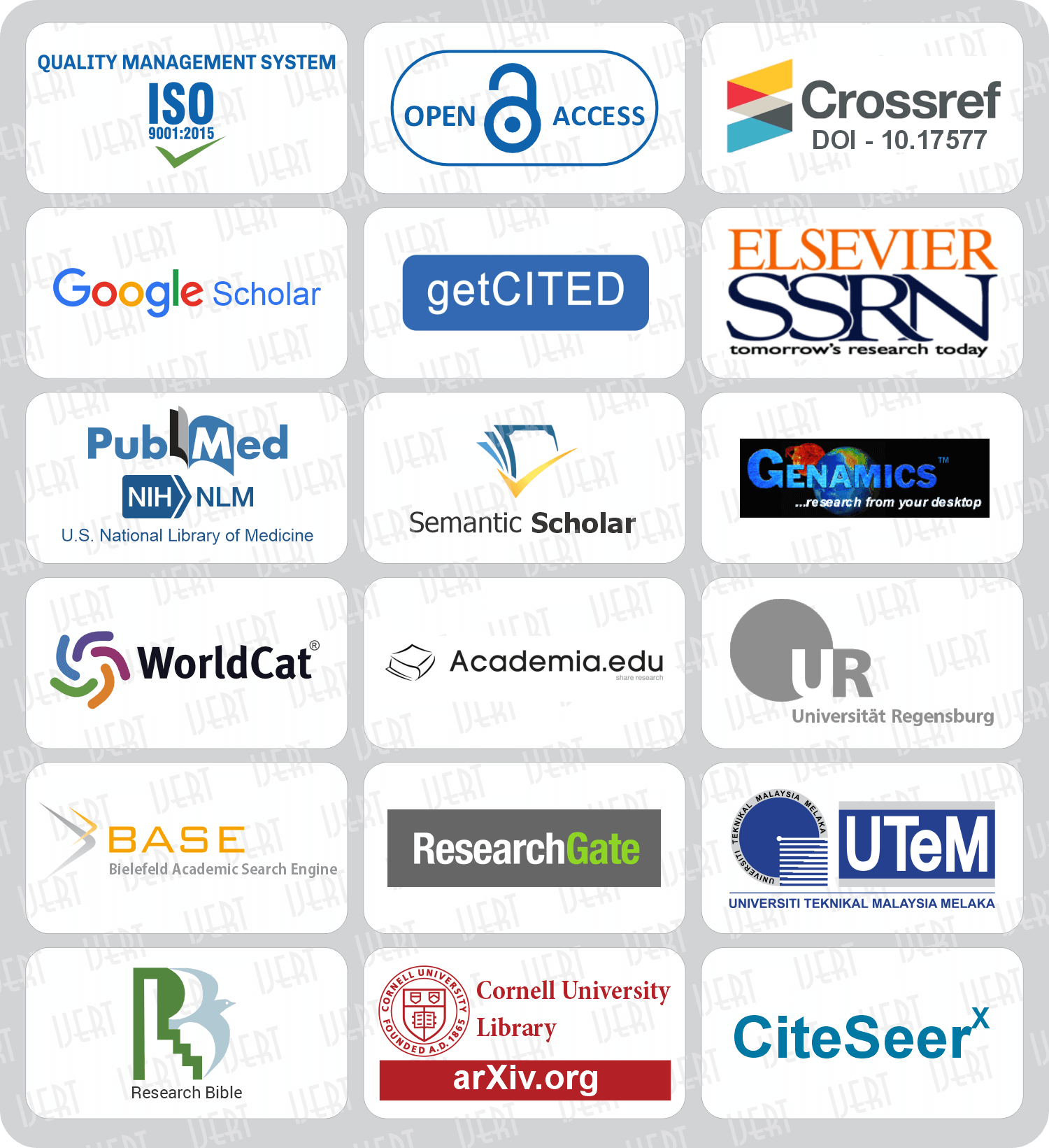 DOI : 10.17577/IJERTV14IS040092
DOI : 10.17577/IJERTV14IS040092
- Open Access

- Authors : Hayk Ghukasyan
- Paper ID : IJERTV14IS040092
- Volume & Issue : Volume 14, Issue 04 (April 2025)
- Published (First Online): 15-04-2025
- ISSN (Online) : 2278-0181
- Publisher Name : IJERT
- License:
 This work is licensed under a Creative Commons Attribution 4.0 International License
This work is licensed under a Creative Commons Attribution 4.0 International License
Artificial Intelligence in Civil Engineering: Transforming the Industry Through Innovation
Author Name: Hayk Ghukasyan
Abstract: Artificial Intelligence (AI) is rapidly transforming industries across the globe, and civil engineering is no exception. In this article, we explore how AI is reshaping traditional civil engineering practices, with a focus on innovative solutions, case studies, and the lessons learned from real-world applications. From optimizing design processes to improving safety and sustainability, AI is unlocking new opportunities for efficiency and cost- effectiveness in civil engineering projects. Drawing from my personal experience in integrating AI technologies in civil engineering, this article highlights both the challenges and immense potential of AI in this sector.
Introduction: Civil engineering, one of the oldest branches of engineering, is fundamental to building and maintaining the infrastructure of our societies. From roads and bridges to buildings and water treatment facilities, civil engineers have traditionally relied on well-established methods and tools to design, construct, and maintain these structures. However, the rapid advancement of Artificial Intelligence (AI) has begun to significantly alter the landscape of the industry.
AI technologies such as machine learning, deep learning, and neural networks are enabling more efficient, accurate, and cost-effective solutions. These innovations are particularly relevant in an era where the demand for smarter, sustainable, and safer infrastructure is growing. In this article, I share insights from my personal experience with AI in civil engineering, focusing on the transformative role AI plays in project management, predictive maintenance, design optimization, and calculation-based tasks.
AI Technologies in Civil Engineering: AI’s applications in civil engineering are vast and varied. Here are some of the key areas where AI is having a significant impact:
- Predictive Maintenance: AI enables civil engineers to predict when infrastructure elements such as bridges, roads, and buildings will require maintenance or repairs. Using machine learning algorithms, data from sensors embedded in structures can be analyzed to forecast failures and prevent costly, unexpected breakdowns (Awolusi et al., 2021).
- Construction Project Management: AI-powered project management tools help optimize scheduling, budgeting, and resource allocation. By analyzing historical data from past projects, AI can predict potential risks, optimize timelines, and help managers make informed decisions, improving project efficiency and reducing costs (Merit Data Tech, 2021).
- Design Optimization: AI algorithms can be used to generate and optimize designs based on specific parameters such as cost, environmental impact, and safety. This can lead to more efficient and sustainable designs, reducing waste and energy consumption while maximizing the utility of the infrastructure (Neural Concept, 2021).
- Calculation-Intensive Tasks: In several of my past projects, AI was employed to handle complex calculations, significantly improving the efficiency and accuracy of structural and environmental assessments. For instance, in a highway construction project, AI models were used to calculate optimal roadway layouts, traffic flow patterns, and environmental impacts, taking into account variables such as weather conditions, soil composition, and existing infrastructure. This helped in the development of an efficient and sustainable design, which reduced costs and construction time.
- In another project, AI was used to analyze stress distribution in materials for bridge design. The AI algorithms ran thousands of simulations to identify the most effective structural arrangements, ensuring both safety and cost-efficiency.
- Autonomous Construction: AI is also revolutionizing construction methods with the introduction of autonomous vehicles, robots, and drones. These technologies can perform tasks such as surveying, material handling, and even 3D printing of building components, all of which reduce human error and increase productivity on construction sites (EBA Engineering, 2021).
Case Studies and Personal Experience: Drawing from my experience, one of the most significant AI implementations in my career was during a project aimed at designing a new highway system. Using AI-based tools, we were able to simulate and optimize different design scenarios before construction began. The AI model evaluated environmental factors, traffic data, and materials to propose the most efficient and sustainable design, reducing both construction time and costs (Kumar et al., 2021).
Another project involved the use of AI for predictive maintenance in a series of urban bridges. By integrating sensor networks with AI algorithms, we were able to predict when specific bridges would require maintenance based on real-time data. This proactive approach saved significant costs and improved public safety by preventing unexpected failures (The Australian, 2021).
Challenges and Opportunities: While AI offers immense benefits, its adoption in civil engineering is not without challenges. One of the major barriers is the lack of high-quality, real-time data. For AI to work effectively, it requires access to large volumes of accurate data, which is not always available in many civil engineering projects. Another challenge is the resistance to change within the industry. Many civil engineering professionals are accustomed to traditional methods and may be hesitant to adopt AI due to a lack of understanding or fear of job displacement. However, AI should be viewed as a tool that complements human expertise, not a replacement.
The opportunities, however, far outweigh the challenges. AIs ability to process vast amounts of data, learn from it, and make predictions will continue to improve efficiency, reduce costs, and enhance safety in civil engineering projects. Furthermore, the use of AI in construction and maintenance could significantly contribute to the development of smarter, more sustainable cities (Wikipedia, 2021).
CONCLUSION
The integration of AI in civil engineering is a game-changer, offering innovative solutions to long-standing challenges in the industry. As demonstrated in the case studies and examples from my experience, AI is enhancing project management, predictive maintenance, design optimization, and performing complex calculation-intensive tasks, while also reducing costs and improving safety. While there are challenges to overcome, including the need for better data and overcoming resistance to change, the potential of AI in transforming civil engineering practices is vast. Moving forward, AI will continue to play a pivotal role in shaping the future of civil engineering, offering new opportunities for efficiency, sustainability, and safety in the built environment.
REFERENCES:
- Awolusi, O., et al. (2021). “Application of Artificial Intelligence (AI) in Civil Engineering.” arXiv. Retrieved from https://arxiv.org/abs/2502.06727.
- Merit Data Tech. (2021). “AI Revolution in Construction: 8 Global Case Studies and Applications.” Retrieved from https://www.meritdata-tech.com/resources/blog/code-ai/ai-revolution-construction-applications/.
- Neural Concept. (2021). “AI in Civil Engineering: Applictions & Advancements.” Retrieved from https://www.neuralconcept.com/post/ai-in-civil-engineering-applications-advancements?utm_source=chatgpt.com.
- EBA Engineering. (2021). “How Generative AI will Transform Civil Engineering.” Retrieved from https://ebaengineering.com/generative-ai-civil-engineering/?utm_source=chatgpt.com.
- Kumar, A., et al. (2021). “Architectural Flaw Detection in Civil Engineering Using GPT-4.” arXiv. Retrieved from https://arxiv.org/abs/2410.20036?utm_source=chatgpt.com.
- The Australian. (2021). “Would you travel over an AI-designed bridge?” Retrieved from https://www.theaustralian.com.au/business/technology/would-you-travel-over-an-aidesigned-bridge-you-probably-already-have-as-top- construction-firms-embrace-the-technology/news-story/2a5e964c2736e8467932060b373ce395?utm_source=chatgpt.com.
- Wikipedia. (2021). “Digital Twin.” Retrieved from https://en.wikipedia.org/wiki/Digital_twin?utm_source=chatgpt.com.





